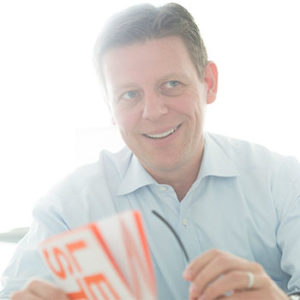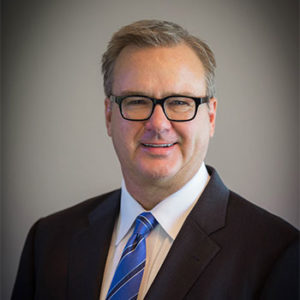By Meghan Morris
The LED market has rapidly matured in a way not seen with other lighting products. It also holds great promise as a tool for manufacturers and end-users to take advantage of its benefits, including long lifetimes and consistent output, for applications well beyond outdoor and indoor lighting. We recently spoke with Jes Munk Hansen, CEO of LEDVANCE, and Rocky Lawrence, President and CEO of NICOR Lighting, about the challenges and opportunities provided by solid-state lighting at this still-early stage of adoption and usage.
Q&A with LEDVANCE’s Jes Munk Hansen:

lightED: Has the explosion of the lighting market in recent years surpassed your expectations?
Munk Hansen: LED as a technology never ceases to amaze both in terms of product advancements and mass adoption, and in certain segments, the market is surpassing our expectations. According to Goldman Sachs, the change in the light industry is “one of the fastest technological changes in human history.” This change will accelerate in the coming years. It isn’t just the technology that is driving change though; we are also going through an industry transformation. In order to enjoy future growth as an industry, we need to continue to break new ground, improve our processes and develop new products that meet the future needs of our distributor partners and their customers.
lightED: What will be the key drivers in the US lighting market in the near-term (between now and 2020)?
Munk Hansen: We see a big move towards integrated LED fixtures, especially in new construction. One of the key reasons is that, for the vast majority of light applications, LED lifespans are longer than the average renovation cycles. It therefore makes less and less sense to have exchangeable light sources in the fixture.
Another key driver is controls which dominated this year’s LIGHTFAIR as more and more companies are offering a wide variety of options for controllability. This can be confusing for distributors trying to determine which controls strategy they should offer customers who crave personalization with their lighting to improve their businesses. Distributors are telling us their end users are looking for a complete plug-and-play system versus controls as an individual component. Partnering with a manufacturer that offers a complete system made up of lamps, fixtures and controls eases installation and commissioning, which makes the contractor, and in turn the distributor, look good.
lightED: What does the future hold for light and connectivity?
Munk Hansen: We are seeing more customers being interested in smart lighting. Our latest SYLVANIA Socket Survey, a nationwide measure of public attitudes about energy-efficient lighting and awareness of lighting trends, found lighting to be one of the top forms of smart technology Americans own. The results also showed 76 percent of Americans agree smart light bulbs will eventually replace regular light bulbs. On a commercial level, integrated control systems and packages are making it easier to justify paybacks via lower energy costs and lowering the barrier of entry, all while increasing sustainability.
lightED: How will distributors play a role in the future of lighting sales?
Munk Hansen: We feel distributors have a crucial role in the future of lighting sales and our combined growth, but those that evolve will be the most successful by staying relevant in a marketplace more and more connected online.
LEDVANCE recently published an international advisor study for the lighting market with recommendations for electrical distributors. We surveyed 140 managers from global distributors and 3,600 electrical installers from around the world, including the US. One of the key takeaways – in order to be successful in the continuing price war in the long term, distributors need a clear company profile that offers tangible value propositions to their customers, especially current and future electrical contractors.
Distributors will always have the advantage of being a local resource for contractors with all the critical pieces for completing a job and the expertise as a trusted advisor. And that trust is crucial. When asked about their top priorities when selecting an electrical distributor, 55 percent of electrical contractors we surveyed said that trust is the most important factor. Even though Amazon is expanding into the electrical industry, it will be challenged to develop relationships as deep as a distributor can. For the future though, distributors need to make the same linkage to the next generation of tech savvy contractors that they have made to those historically. This can be done by transferring their strengths to the online world with product ordering and customer service.
Our distributors are our trusted partners. They have helped make us a global leader and will continue to grow our combined success in the future. One of our core values, “Winning Together,” illustrates this point well. The success of our distributors is our success and vice versa.
lightED: How can distributors build a stronger relationship with designers and contractors to use the best light in the correct situations?
Munk Hansen: Follow the three E’s – Educate, Execute and Expand – to build stronger relationships and trust with designers and contractors.
Being educated on the latest trends and technology is critical, and it is our job as manufacturers to help with training. Education is especially important as the market moves towards smart lighting, which requires distributors learn new skills. When we moved to a new 124,000-square-foot headquarters in Wilmington, Massachusetts, we deliberately placed our training center LIGHTPOINT® at the heart of our new facilities. This is because we recognize the importance of helping our channel partners and sales force get in-person training to stay informed about new products, industry trends and best practices. Thousands more benefit from our online training modules available in various languages. We continue to invest in training resources for our SYLVANIA general lighting products to better meet the needs of our customers.
Execution is a part of any good distributor’s DNA. Continue delivering on time, meeting the needs of your customers, and being the trusted partner and resource. This is fundamental.
The final E is Expand, meaning expand your thinking. Think beyond products and focus on the application. Offering personalized lighting is being seen more and more as a value-added feature versus just putting in the cheapest option to ensure basic illumination. It isn’t just about selling a lamp to fit a socket. It is about creating a space that meets the current and future needs for those that are in it.
lightED: How will price impact the future of lighting?
Munk Hansen: While LED price point declines have helped with speed and acceptance, units have not risen exponentially to make up for the price reduction. It is our job as manufacturers to bring to distributors new products, like integrated LED fixtures, in order to increase sales. We count on our distributors to look for opportunities to incorporate additional lighting options into jobs rather than just fulfill the immediate needs. These strategies will help grow the market.
The good news regarding declining prices is that according to our previously mentioned survey, when selecting a distributor price is decisive for only a quarter of the surveyed electrical contractors. The majority place value on trustworthy relations and a wide assortment of innovative and available products.
Another aspect about price though to consider is its impact on quality. It isn’t just the big 3 lighting companies anymore; it is more like 300. This can make it harder for distributors to know who to partner with, and it is easy to be tempted by price. You don’t want to sacrifice quality though, especially when your company’s reputation is on the line with every job. We recommend distributors work with a supplier with a proven history of quality and lighting expertise. Take into consideration warranty, quality of service and commitment to your business.
lightED: What do you think the capabilities of light may one day become?
Munk Hansen: We are entering a new dawn for lighting. I can’t predict exactly what SYLVANIA general lighting products we will be selling in five years due to the rapid evolution of the industry. I can say that LEDVANCE will be helping distributors enjoy increased success by having the highest quality products that will meet the needs of their customers, backed by a rock solid commitment to service and the distributor relationship.
Matt McCarron, our VP of the industrial commercial channel, has a great example related to exciting concept cars you see at major automotive trade shows. A concept car isn’t about selling the car, it’s about selling the idea of the car. What could be. For us, a concept car is a new lighting product that may or may not see light of day. What matters is that we are innovating and always thinking about what could be. For example, what if we could combine building materials and light sources so light wasn’t coming out of a fixture in the ceiling, but instead was coming out of the ceiling itself? These are the kinds of ideas that motivate us and keep us pushing forward.
Q&A with NICOR’s Rocky Lawrence:

lightED: Has the explosion of the lighting market in recent years surpassed your expectations?
Lawrence: I have been very encouraged by our market’s success. Although industry insiders could see the potential of LED technology many years ago, the beginning of the “boom” was marked by the usage of LED’s in street signal lights, exit signs, and flashlights.
Solid state lighting really started to take off in the late 2000’s when efficacy, quality, and reliability began meeting acceptable standards. In addition, lighting products started to become more cost-effective, which was the big turning point. Two other events helped to accelerate the use of solid state lighting: the United States government enacted energy standards to eliminate incandescent sources and utilities offered rebate incentives for upgrading to more efficient sources. Those measures furthered the momentum of an already growing adoption rate for LED products.
lightED: What will be the key drivers in the US lighting market in the near-term (between now and 2020)?
Lawrence: It will be vital for the U.S. lighting market to continue improvements in efficacy, quality, and reliability. Connectivity via various systems such as wireless, PoE (Power over Ethernet), or the IoT (Internet of Things) will play an increasingly larger role in lighting systems delivered to market. To keep pace with rapidly advancing technology, NICOR continually evaluates new technologies to ensure we stay competitive and relevant in the marketplace. We will be offering higher efficacy products that will deliver better light at lower costs. The luminaire will be “smart” and communicate via integrated systems over wireless and PoE platforms, providing more control, data, convenience, and functionality.
lightED: What does the future hold for light and connectivity?
Lawrence: Connected LED lighting products will be the industry standard for most future applications. Technologies and integration capabilities being developed in the lighting industry are becoming much more cost effective and practical. As a result, “smart” luminaires will become prevalent in applications from single-family homes to commercial operations.
lightED: How will distributors play a role in the future of lighting sales?
Lawrence: LED lighting and solutions for control and connectivity are becoming a specialized field. Distributors will need a dedicated person or entire team to understand the sophisticated technology and become true specialists in how the products and systems can be applied. This knowledge will enable distributors to add value guiding contractors, designers, and end users to better solutions and increased sales.
lightED: How can distributors build a stronger relationship with designers and contractors to use the best light in the correct situations?
Lawrence: Distributors can offer great value to designers and contractors by representing multiple manufacturers and developing the expertise to recommend various lighting options and application solutions. The technology is moving rapidly – not only are there improvements to existing products, but also entirely new products coming into the market every month. Distributors that effectively communicate these advancements and build a strong, knowledgeable team that is current with the many solutions being offered to the market will be a valued resource.
lightED: How will price impact the future of lighting?
Lawrence: Initially, it will cost more for superior lighting and systems; however, over time (like most technology) the end user will realize the benefit of improved technology and ease of use. The success of the iPhone demonstrates that being connected in a multifaceted, user-friendly system is highly valued by the end user. Therefore, futuristic lighting will be demanded and paid for willingly, although pricing for certain lighting products will not continue to decline as fast as we have seen. Product quality and performance will continue to improve, which will maintain steady pricing.
lightED: What do you think the capabilities of light may one day become?
Lawrence: In today’s world, lighting capability seems limitless. Lighting fixtures were once designed around the light bulb – it’s shape, form, function – but with LED technology, lighting products no longer have this design constraint. Technologies such as OLED’s (organic LED’s), PoE, the IoT, and wireless solutions offer exciting possibilities and will be pivotal in new lighting applications.
Tagged with Exclusive Feature, LEDVANCE, lightED, lighting, NICOR, SSL
